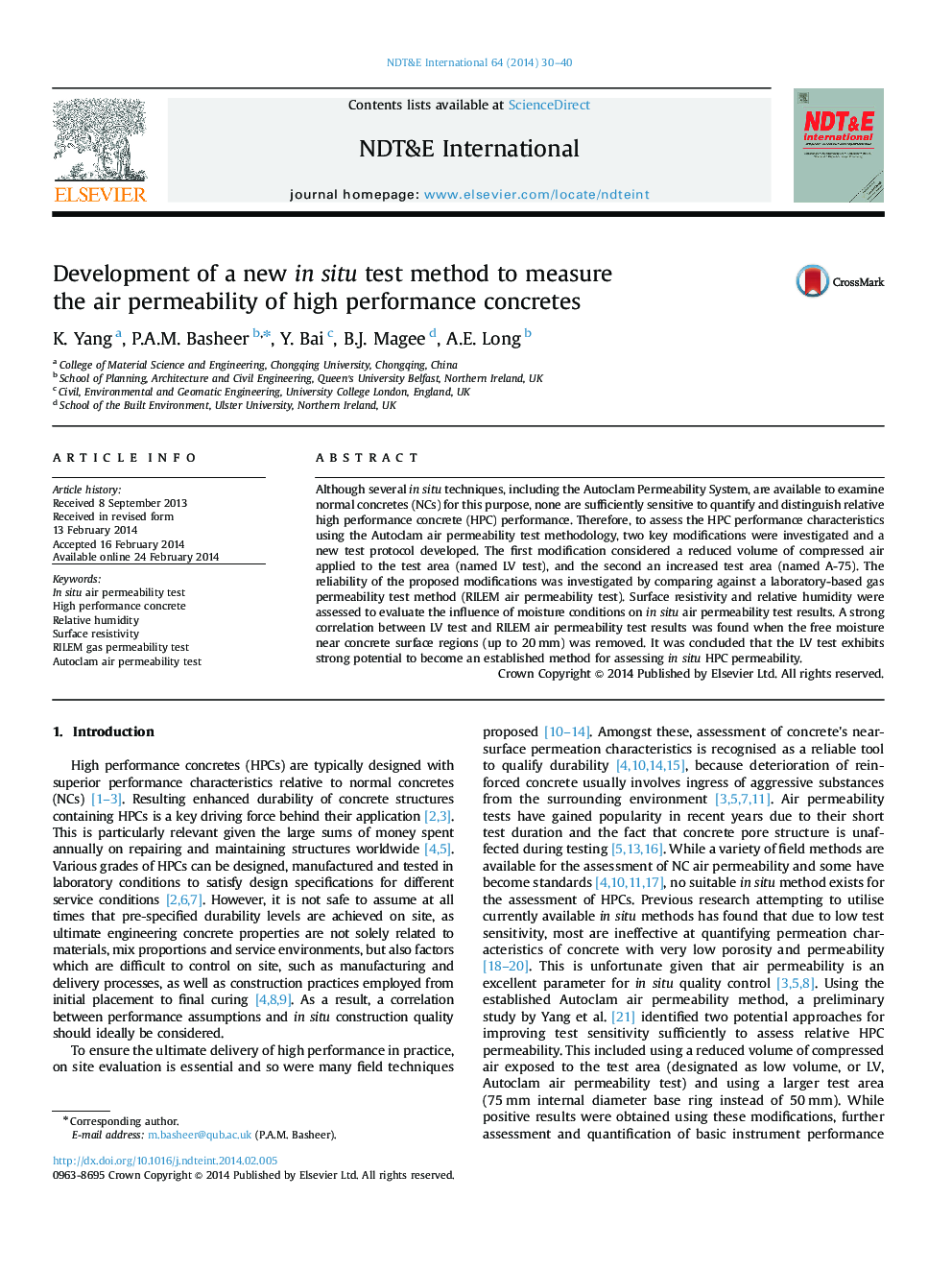| Article ID | Journal | Published Year | Pages | File Type |
|---|---|---|---|---|
| 295045 | NDT & E International | 2014 | 11 Pages |
Although several in situ techniques, including the Autoclam Permeability System, are available to examine normal concretes (NCs) for this purpose, none are sufficiently sensitive to quantify and distinguish relative high performance concrete (HPC) performance. Therefore, to assess the HPC performance characteristics using the Autoclam air permeability test methodology, two key modifications were investigated and a new test protocol developed. The first modification considered a reduced volume of compressed air applied to the test area (named LV test), and the second an increased test area (named A-75). The reliability of the proposed modifications was investigated by comparing against a laboratory-based gas permeability test method (RILEM air permeability test). Surface resistivity and relative humidity were assessed to evaluate the influence of moisture conditions on in situ air permeability test results. A strong correlation between LV test and RILEM air permeability test results was found when the free moisture near concrete surface regions (up to 20 mm) was removed. It was concluded that the LV test exhibits strong potential to become an established method for assessing in situ HPC permeability.
